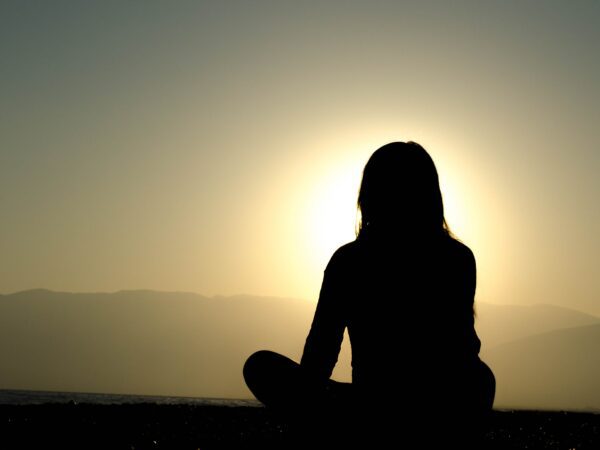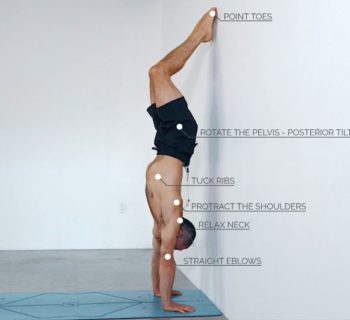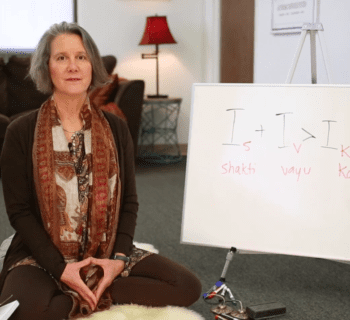Yoga and Pilates are both rooted in depth and tradition and offer paths to enhanced well-being. Their philosophies and techniques diverge, providing unique experiences. Practitioners frequently weigh one against the other, contemplating which exercise routine best fits their personal health narrative.
Yoga, an ancient practice with a tapestry of styles, calls on one’s spiritual, mental, and physical faculties, often focusing on flexibility, strength, and the balance of the ‘prana’—life force. Conversely, Pilates hones in on precise movements, core stability, and muscular endurance, often emphasizing controlled exercises that challenge one’s physical center.
Unraveling the Core Philosophies
At the heart of yoga is a centuries-old spiritual fabric woven with threads of mindfulness, physical postures known as asanas, and deep breathing techniques designed to increase the mind-body connection. Yoga’s holistic approach encourages reaching inward for personal growth and tranquility.
Meanwhile, Pilates stems from the innovative mindset of its creator, Joseph Pilates, prioritizing the strengthening of the core—your body’s powerhouse—through a series of low-impact, highly specialized exercises that enhance posture, muscle tone, and flexibility.
Each practice, in its essence, cultivates distinct pathways to well-being. Which one is right for you depends on your own fitness goals.
Yoga’s Mind-Body Connection
Yoga is more than a physical practice. It is a tool you can use to increase your mental, physical, and spiritual well-being.
Through yoga, we tap into self-awareness, intertwining breath with movement, invoking a profound sense of presence and mindfulness.
As we practice asanas, we synchronize the breath with movement, fostering an inward odyssey and enhancing self-reflection, serenity, and mental clarity.
Yoga’s meditative practices deepen our connection to our inner selves, cultivating a sanctuary of tranquility within. They nourish the spirit as robustly as the body.
Pilates’ Focus on Muscle Control
Pilates hones in on precision with controlled movement.
Core strength is non-negotiable in Pilates. Contrology (core control with mindful movement), as Joseph Pilates coined it, is Pilates’ main principle.
Precise muscle activation sets Pilates apart, integrating breath with more than 500 distinct exercises for comprehensive muscle synergy. It’s a harmonized engagement requiring focus, control, and a philosophical commitment to mastering one’s own body dynamics.
Pilates encourages autonomy in strength—expertly chiseling the body’s frame. You’ll cultivate steadfast muscle control, attuned to the body’s subtle language of alignment and nuanced force.
Harness the prowess of Pilates to sculpt a resilient, attuned physique.
Comparing Physical Exercise Benefits
Yoga enhances flexibility, fostering long, limber muscles adept at a range of motion. This suppleness aids in injury prevention. It also helps build strength with no equipment by requiring you to hold challenging postures.
In contrast, Pilates delivers a different kind of strength—dynamic stabilization, vital for core integrity. It sharpens the body’s endurance and tones with a tactical, anatomical precision, harnessing a deep connection with one’s musculature.
Both modalities offer “body intelligence” and “muscle mindfulness,” each sculpting a path to a uniquely balanced physicality.
Yoga’s Flexibility and Balance
Yoga, an ancient practice, subtly increases our flexibility and nurtures a sense of balance that benefits our daily lives.
Over time, regular yoga sessions invite a transformative expansion in our range of motion. Through postures known as asanas, these movements encourage elasticity in the muscles, hone in on joint mobility, and promote equilibrium in the body’s natural alignment. As we evolve in our practice, we graduate from simple stretches to complex poses that challenge our boundaries and enhance our proprioceptive awareness. This awareness cultivates a graceful and intentional kinesthetic sense, engraining a gentle yet powerful harmony within our movements.
The cumulative effect of these exercises develops into a foundation of balance that’s both physical and mental. As practitioners, we learn to stabilize ourselves not only on the yoga mat but in various challenging situations encountered in life. This equilibrium becomes a serene anchor in tumultuous moments, providing a base from which confidence and composure can flourish.
Importantly, as we gain physical balance through yoga, we also support our mental and emotional well-being. Poses that require focus and poise translate into a mind that’s better equipped to handle the undulating rhythms of life. This mental fortitude, coupled with the physical benefits of enhanced flexibility, positions yoga as a holistic approach to health, emphasizing the integration of mind, body, and spirit. The diligent practice of yoga yields a graceful agility that enriches every movement, fostering an enduring and adaptive resilience that reverberates through the entirety of our lives.
Someone who wants to have a healthier, more flexible body and mind would benefit from attending yoga classes and starting a practice.
Pilates for Strength and Toning
Pilates is a method of exercise emphasizing precision, breath, and the core, resulting in improved strength and muscle tone. Its exercises focus on controlled movements that target the powerhouse—your core, including abdominal muscles, back, and pelvic regions.
These exercises often use resistance, like springs or bands, enhancing the muscle-sculpting effects. Pilates is excellent for toning muscles without adding bulk, creating a sleek and sculpted look.
With a strong emphasis on alignment and technique, Pilates builds a symmetrical and balanced musculature. This attention to form minimizes the risk of injury and ensures that each movement is effective.
Regular Pilates routines can contribute to an overall leaner silhouette, working deep stabilizing muscles often overlooked in other workouts. These muscles support posture and efficient movement patterns enhancing both appearance and functional fitness.
Pilates also focuses on the quality of movement rather than just the quantity, ensuring that each repetition is purposeful and sculpting. This mindful approach to exercise maximizes the benefits of each session, contributing to the body’s overall strength and toned appearance.
Ultimately, Pilates might be the perfect fit for someone’s fitness journey if they’re looking to enhance strength without excessive bulk. Its targeted exercises refine muscle tone and improve core stability for a balanced, strong physique.
Assessing Mental and Emotional Impacts
Yoga and Pilates both serve as conduits for mental clarity and emotional balance, through distinct approaches that cater to the practitioner’s needs. Yoga, with its meditative roots, is renowned for its profound impact on stress reduction, fostering an environment of mindfulness that extends beyond the mat. Culturally associated with a philosophy of life, yoga provides an enduring sense of tranquility and self-awareness.
Pilates, on the other hand, emphasizes precise movements that require mental concentration correlating to cognitive benefits. This focus helps in developing a heightened body awareness known as proprioception, which can lead to a serene self-assuredness in one’s physical presence.
Yoga’s Stress-Relief Techniques
Yoga transcends physical fitness; it’s a sanctuary.
Yoga’s pantheon of stress-relief methodologies offers a holistic escape from the clutches of daily turmoil. Each asana (pose) synergizes with breath control (pranayama) and meditation practices to manifest a serene haven within, dissolving the layers of tension that cloak our mental landscape. Through yoga, we not only confront but also embrace and diffuse our accumulation of stress, finding solace in the tranquility of present-moment awareness.
Mindful breathing is the cornerstone of relaxation.
The ritualistic nature of yogic practice – the flow of movements synchronized with breath – is inherently calming. Each inhale and exhale becomes a meditative act, systematically dismantling stress and fostering a profound sense of peace and centeredness. This breath-centered focus of yoga is what many adherents point to when they talk about the unmatched stress-reduction benefits of their practice.
And then, there’s the powerful savasana.
Savasana, or the ‘corpse pose,’ caps off each practice session as a deep relaxation phase. Here, practitioners release every muscle, inviting serenity to saturate their being. This pose functions as the quintessential decompression moment, where physical stillness paves the way for mental clarity and an unparalleled sense of inner peace that can permeate one’s day long after the practice has ended.
Pilates’ Concentration Enhancement
Pilates demands a unique synergy of body and mind, greatly enhancing focus and concentration.
Mindful Movements: Pilates requires precise movement control, which demands high levels of attention and mindfulness.
Breath Coordination: The practice involves specific breathing patterns that help maintain concentration during each exercise.
Core Engagement: Central to Pilates is the engagement of the ‘powerhouse’—the core muscles—which involves constant mindful engagement.
Rhythmic Flow: Pilates exercises are performed in a flowing rhythm, promoting a mental state that is both alert and relaxed.
Sensory Awareness: Practitioners are encouraged to be fully aware of their sensory experiences, which aids in keeping the mind attentive and focused.Each movement in Pilates is an act of deliberate concentration, training the mind to be present.
Deliberate practice of these elements within Pilates transcends the mat, enhancing overall mental alertness and presence in daily life.
Tailoring to Your Fitness Goals
Depending on your individual fitness aspirations, yoga and Pilates serve complementary yet distinct roles. For those aiming to enhance flexibility, reduce stress, and achieve a harmonious balance between body and mind, yoga emerges as an optimal choice, inviting a serene exploration of one’s physical and spiritual wellness.
Conversely, Pilates focus on controlled movements and core activation makes it the go-to regimen for those seeking to build muscular endurance and stability, ensuring each session advances you closer to your robust fitness ambitions.
Aligning with Health Objectives
When considering whether yoga or Pilates aligns best with your health objectives, it’s crucial to reflect on your personal wellness journey. Both practices encourage a holistic approach.
Yoga thrives on its variety—offering paths like Vinyasa for dynamic movement, Hatha yoga for foundational postures, and Yin for deep stretches, allowing for a tailored practice that can evolve with your growing fitness prowess and shifting health priorities.
A dedicated Pilates regimen promises improved joint mobility and a sculpted physique, emphasizing precision over repetition—a premium choice for those seeking definition without bulk.
Ultimately, your choice hinges on what resonates with your body’s needs and personal wellness narrative. Both yoga and Pilates provide fruitful avenues to health, varying in methods but united in their pursuit of a centered, stronger self.
Considerations for Physical Limitations
Certain health conditions can make some exercises more beneficial or safer than others. Reflect upon your own physical condition—do you have existing injuries or specific health concerns that might influence your choice between yoga and Pilates?
Those with joint problems may prefer Pilates due to its low-impact exercises and focus on small, controlled movements. The methodical pace of Pilates can be especially beneficial for avoiding excess strain, building up strength and stability in areas that need more attention.
Conversely, if flexibility and balance are areas for improvement, yoga may be the more fitting path. Its practice emphasizes stretching and holding poses that can increase range of motion. However, it’s critical to approach intense stretches or advanced poses with caution to prevent overextension.
So what’s right for you?
In this article you were given a lot to consider about these two forms of exercise, but there is one other thing you should consider. Pilates is one form of exercise, but yoga is so much more than that. There are many styles of yoga and at Omstars, we say there is a style of yoga for everyone. That is the beauty of the practice. Yoga can give everything that Pilates has to offer as far as strength training and toning goes and so much more. When you are trying to decide what is right for you, consider that.
No matter what you decide, it’s crucial to listen to your body and not to push too hard; honor your limitations. Enjoy the journey toward well-being, whether it’s through the mat of Pilates or the spiritual path of yoga.
If you’ve decided that yoga is for you, sign up for an Omstars membership for guidance on your journey. As a member, you’ll get access to thousands of classes, including daily live classes and hundreds of teachers. Start your membership today.
Image by Ben Kerckx from Pixabay










